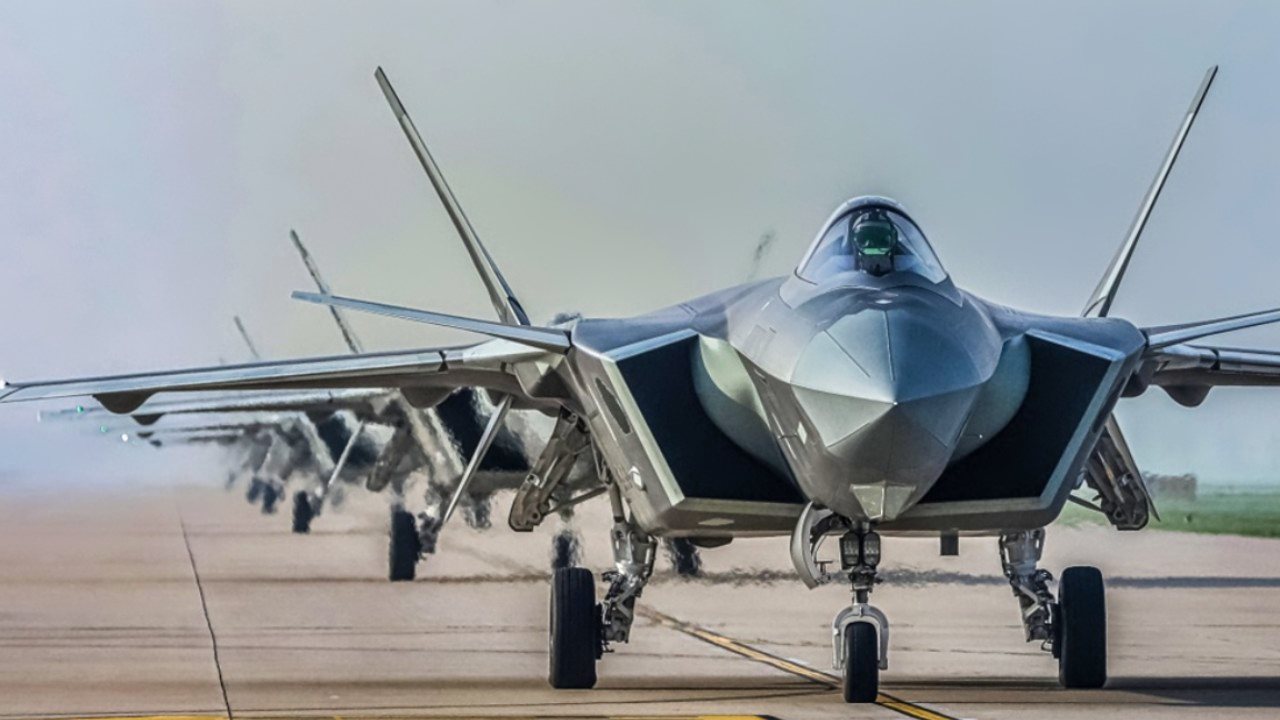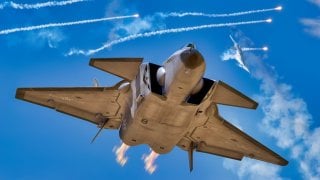China's J-20 Is One Dangerous Stealth Fighter the U.S. Air Force Fears
The Chengdu J-20 "Mighty Dragon," China's counterpart to the F-22 Raptor, is often debated in the West regarding its classification as a true fifth-generation fighter.
Summary: The Chengdu J-20 "Mighty Dragon," China's counterpart to the F-22 Raptor, is often debated in the West regarding its classification as a true fifth-generation fighter.
-Despite skepticism and claims of its design being a derivative of stolen F-22 blueprints, the J-20 features advanced stealth capabilities, proving formidable in combat simulations and PLA Air Force operations, notably in undetected flights over Taiwan.
-China's robust defense production capabilities allow rapid replacement of lost units, contrasting with American production challenges. The J-20, with its stealth and sensor fusion, poses a significant threat, particularly to Taiwan, which relies on older fourth-generation fighters.
Chengdu J-20: China’s Stealth Power Play Against the F-22 Raptor
The Chengdu J-20 “Mighty Dragon” is China’s answer to the F-22A Raptor. Much debate in the West has been had about whether it should truly be considered a fifth-generation warplane or if it is more akin to a “fourth-generation ++” bird, like the Russian Su-57 (or even the F-15EX Eagle II).
At the same time that Western observers insist that the J-20 is hopelessly outmatched by its American rival, the F-22, Western sources insinuate that the J-20 is just a stolen copy of the F-22. But, if that’s the case, then the J-20 is much more than just an augmented fourth-generation bird.
Certainly, the F-22 is far more advanced than most outsiders give it credit for. In nearly every wargame conducted by Western militaries, the introduction of even a pair of F-22A Raptors in an air battle against Chinese forces—including the vaunted J-20—tips the battle in America’s favor. Still, to discount the J-20 as somehow something less than a threat is a foolish position to take.
This is especially so considering snippets of information that has been released from the performance of the J-20 in combat-like conditions.
For instance, as China’s People’s Liberation Army Air Force (PLAAF) has intensified its incursions into Taiwan’s airspace, the Chinese military has deployed the J-20 repeatedly. According to PLAAF Captain Yang Jucheng of the “Wang Hai” Brigade, in 2023, he took his J-20 and completely overflew Taiwan, penetrating the island’s well-defended airspace, without ever having been detected.
While neither the Taiwanese Air Force nor the US military have confirmed Captain Yang’s comments, the likelihood he did this is high. After all, the J-20 is a real fifth-generation warplane that possesses state-of-the-art stealth technology.
Quantity Has a Quality of Its Own
What’s more, China’s far superior defense industrial base can churn out these systems and other advanced weapons platforms at a far greater clip than the combined defense industrial bases of the West could ever hope to do. Adding insult-to-injury, most of China’s manufacturing capabilities were given to them by America and the West.
Now, the Chinese possess decisive advantages in the defense industrial competition—meaning that their fifth-generation warplanes can be mass produced. Even if they aren’t as good as the F-22, should China lose any of their J-20s in combat, they can likely easily replace them.
This is not the case for the Americans and their F-22. Further, the F-35 Lightning II, which is the main fifth-generation warplane for the US Air Force, Navy, and Marine Corps, while more numerous than their F-22 sibling, is still dependent on sclerotic production lines and brittle supply chains.
If multiple units were lost in combat, replacing these expensive and complex systems would not be an easy task for America’s ailing defense industrial base.
All this means is that, whether China’s J-20 is less sophisticated than America’s vaunted fifth-generation warplanes or not, they are effective enough to be a serious threat. And China, not the United States, possesses the means to mass-produce replacements at a much faster clip than what the Americans can do.
J-20: A Game-Changing Element
One source has described the Chinese PLAAF seeking to utilize the J-20 the way armies use snipers: employing its near-invisibility, thanks to its advanced stealth capabilities that have shown how vulnerableTaiwan’s air defenses really are, and then deploying devastating attacks on more vulnerable systems from behind that veil of stealth, targeting enemy airborne early warning airplanes and air-to-air refueling tankers.
Those tankers would be essential in any US-China fight over Taiwan, since China’s strategy would likely see the immediate destruction of American airbases in the surrounding region, meaning whatever US fighters were operating would need to be refueled mid-air, as there’d be no place for them to land and refuel.
Although, there does seem to be some disagreement as to the purpose of the J-20. Because, as Western analysts make the claim that the J-20 will behave as a sniper, harrying larger, less well-defended targets, such as mid-air refueling tankers or airborne early warning planes, in 2017, PLAAF Brigade Commander Xiao Jun clearly stated that the Chengdu J-20 would be used to “sweep away all fourth-generation fighters.”

This, of course, is a massive problem for Taiwan, which lacks its own fifth-generation warplane capability (and the Americans are not willing to hand off those capabilities to Taiwan) and relies heavily on fourth-generation planes, like the F-16, which will likely be unable to stand up to the J-20.
J-20: It’s a Real Fifth-Generation Fighter
The J-20 also has an incredible data-sharing capacity. Thanks to sensor fusion capabilities as well as sophisticated data processing, the J-20 can gather data on enemy targets by linking up to the data streams of friendly drones, fighters, early warning aircraft, satellites, and electronic warfare (EW) units.
This is a capability that both the F-35 and F-22 have.
J-20s can carry up to four PL-15 beyond-visual-range missiles in its lower missile bay while also carrying PL-10 short-range combat missiles in its side bays.
In fact, Matthew Joupi of the Aviation Week Network admonished his skeptical Western readers to, “Face it, the J-20 is a fifth-generation fighter.” He is likely right. And China’s possible targets—notably Taiwan—are woefully underprepared for defending against the J-20 fifth-generation warplane.
About the Author
Brandon J. Weichert, a National Interest national security analyst, is a former Congressional staffer and geopolitical analyst who is a contributor at The Washington Times, the Asia Times, and The-Pipeline. He is the author of Winning Space: How America Remains a Superpower, Biohacked: China’s Race to Control Life, and The Shadow War: Iran’s Quest for Supremacy. His next book, A Disaster of Our Own Making: How the West Lost Ukraine, is due October 22 from Encounter Books. Weichert can be followed via Twitter @WeTheBrandon.


